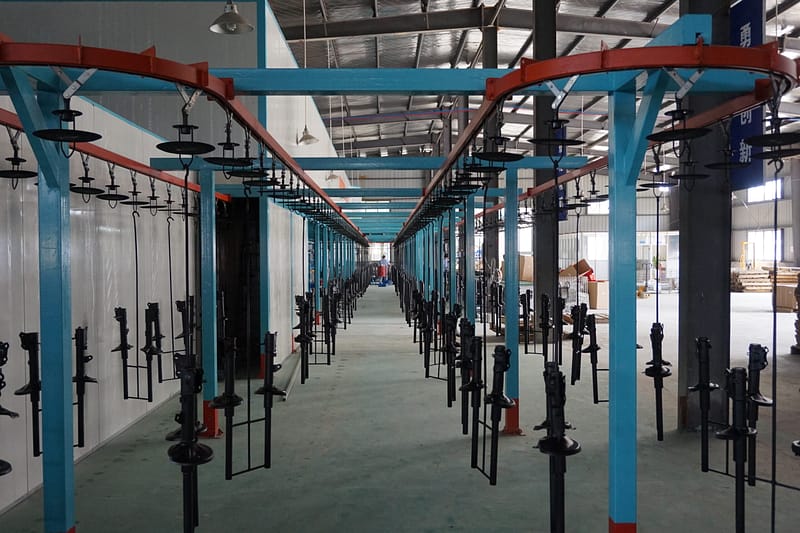As a suspension specialist with over a decade of experience diagnosing automotive damping systems, I’ve seen countless drivers unknowingly compromise their safety by ignoring critical warning signs of shock absorber failure. Today, I want to share the five most reliable indicators that your vehicle’s shock absorbers require immediate attention – signs that could save you from costly repairs and potentially dangerous driving situations.
Understanding Shock Absorber Function Before Diagnosis
Before diving into the warning signs, it’s crucial to understand what your shock absorbers actually do. Many drivers mistakenly believe shock absorbers support their vehicle’s weight – that’s actually your springs’ job. Shock absorbers control the oscillatory motion of your springs, ensuring your tires maintain optimal contact with the road surface while providing stability during acceleration, braking, and cornering.
When shock absorbers begin to fail, they lose their ability to control these oscillations effectively, leading to a cascade of performance and safety issues that manifest in predictable ways.
Warning Sign #1: Excessive Bouncing and Poor Ride Quality
The Bounce Test: Your First Diagnostic Tool
The most recognizable symptom of worn shock absorbers is excessive bouncing after hitting bumps or dips. A properly functioning shock absorber should allow your vehicle to settle quickly after encountering road irregularities – typically within one complete oscillation cycle.
How to Perform the Bounce Test:
- Park your vehicle on level ground
- Push down firmly on each corner of your vehicle
- Release quickly and observe the settling behavior
- Count the number of bounces before the vehicle stabilizes
Normal Response: Vehicle should settle within 1-2 bounces Warning Sign: Multiple bounces (3 or more) indicate worn damping
Progressive Deterioration Patterns
Shock absorber wear typically follows predictable patterns:
- Early Stage: Slight increase in settling time after road impacts
- Moderate Wear: Noticeable bouncing on highway expansion joints
- Severe Deterioration: Continuous oscillation over minor road irregularities
- Critical Failure: Complete loss of damping control, creating dangerous driving conditions
Warning Sign #2: Uneven or Accelerated Tire Wear Patterns
Cupping and Scalloping: The Tell-Tale Signatures
Failed shock absorbers create characteristic tire wear patterns that experienced technicians can identify immediately. When damping control is compromised, your tires experience inconsistent road contact pressure, leading to irregular wear patterns.
Cupping (Scalloping) Pattern Identification:
- Appearance: Regular high and low spots around the tire circumference
- Cause: Wheel hop from inadequate damping control
- Location: Most commonly observed on rear tires
- Progression: Becomes more pronounced with continued driving
Additional Wear Indicators:
- Center wear: Often accelerated due to poor vehicle stability
- Edge wear: Caused by excessive body roll during cornering
- Flat spotting: Results from wheels bouncing and skidding
Economic Impact of Delayed Replacement
Ignoring shock absorber-related tire wear can cost significantly more than timely replacement:
- Premium tire replacement: $800-1500 per set
- Shock absorber replacement: $300-800 per axle
- Additional suspension damage: $500-2000 for related components
Warning Sign #3: Increased Stopping Distances and Brake Performance Issues
The Physics of Damping and Braking
One of the most dangerous consequences of worn shock absorbers is compromised braking performance. During braking, your vehicle’s weight transfers forward, compressing the front suspension. Worn shock absorbers cannot control this weight transfer effectively, resulting in:
Immediate Safety Concerns:
- Extended stopping distances (up to 20% increase)
- Brake dive causing loss of control
- Wheel lockup on irregular surfaces
- ABS system interference due to wheel bounce
Testing Brake Performance Safely
Professional Testing Methods:
- Controlled deceleration tests on closed courses
- ABS activation monitoring during emergency stops
- Brake pedal feel evaluation for inconsistencies
- Stopping distance measurements at various speeds
Warning: Never attempt high-speed braking tests on public roads. These evaluations should only be performed by qualified professionals in controlled environments.
Warning Sign #4: Vehicle Instability During Cornering and Lane Changes
Body Roll and Handling Degradation
Worn shock absorbers dramatically affect your vehicle’s cornering stability and handling characteristics. As damping control deteriorates, you’ll experience increasingly pronounced body roll, delayed steering response, and reduced overall vehicle confidence.
Progressive Handling Symptoms:
- Mild Wear: Slight increase in body lean during turns
- Moderate Deterioration: Noticeable delay in steering response
- Severe Wear: Excessive body roll creating unstable cornering
- Critical Failure: Loss of directional control during lane changes
High-Speed Stability Issues
Modern vehicles rely on effective damping for highway stability, particularly during:
- Lane change maneuvers at highway speeds
- Crosswind compensation requiring constant steering corrections
- Passing situations where precise control is essential
- Emergency avoidance scenarios demanding immediate response
Impact on Electronic Stability Systems
Contemporary vehicles integrate shock absorber performance with advanced safety systems:
- ESC (Electronic Stability Control) effectiveness depends on predictable suspension behavior
- Traction control systems require consistent tire-to-road contact
- Advanced driver assistance systems assume properly functioning suspension components
Warning Sign #5: Visible Fluid Leaks and Physical Damage
Hydraulic Fluid Loss: The Definitive Indicator
Fluid leakage represents the most conclusive evidence of shock absorber failure. Modern shock absorbers are sealed systems – any external fluid indicates internal seal failure and complete loss of damping capability.
Leak Identification Process:
- Visual inspection of shock absorber body and mounting points
- Fluid type identification (hydraulic oil vs. other automotive fluids)
- Leak severity assessment (seepage vs. active dripping)
- Contamination evaluation (dirt accumulation indicating chronic leakage)
Physical Damage Assessment
External Damage Indicators:
- Bent or damaged piston rods from impact or corrosion
- Cracked or broken mounting hardware causing alignment issues
- Corrosion damage compromising structural integrity
- Dust boot deterioration allowing contaminant infiltration
Internal Wear Indicators
Even without visible leaks, internal wear can compromise performance:
- Valve wear reducing damping consistency
- Seal degradation causing internal bypassing
- Fluid contamination from extended service intervals
- Gas charge loss in gas-pressurized systems
Professional Diagnosis and Replacement Considerations
When to Consult Professionals
While basic bounce tests and visual inspections can identify obvious problems, comprehensive shock absorber evaluation requires professional equipment and expertise:
Professional Diagnostic Tools:
- Shock absorber dynamometers for precise force measurement
- Suspension geometry analyzers for alignment verification
- Road simulation equipment for comprehensive testing
- Thermal imaging for heat dissipation analysis
Replacement Best Practices
Complete Axle Replacement: Always replace shock absorbers in pairs (both front or both rear) to maintain balanced performance and prevent handling irregularities.
Quality Considerations:
- OEM equivalent specifications for optimal performance
- Gas-charged systems for enhanced consistency
- Warranty coverage protecting against premature failure
- Professional installation ensuring proper torque and alignment
Maintenance Prevention Strategies
Extending Shock Absorber Lifespan
Proactive Maintenance Approaches:
- Regular visual inspections during routine service
- Proper wheel alignment preventing excessive wear
- Quality tire maintenance reducing system stress
- Driving habit modifications avoiding aggressive impacts
Service Interval Recommendations
Mileage-Based Guidelines:
- Conventional shock absorbers: 50,000-80,000 miles
- Gas-charged systems: 60,000-100,000 miles
- Performance applications: 30,000-50,000 miles
- Severe duty cycles: 25,000-40,000 miles
Safety and Economic Implications
The True Cost of Delayed Replacement
Postponing shock absorber replacement creates cascading expenses:
- Accelerated tire wear: $800-1500
- Brake system stress: $400-1200
- Suspension component damage: $500-2000
- Potential accident costs: Immeasurable
Legal and Insurance Considerations
Failed shock absorbers can have legal implications in accident scenarios:
- Negligent maintenance claims in liability cases
- Insurance coverage questions regarding vehicle condition
- Commercial vehicle regulations requiring functional suspension systems
Conclusion: Prioritizing Safety Through Proactive Maintenance
As someone who has diagnosed thousands of suspension systems, I cannot overemphasize the importance of addressing these warning signs promptly. Your shock absorbers are critical safety components that affect every aspect of your vehicle’s performance – from daily comfort to emergency maneuverability.
The five warning signs we’ve discussed – excessive bouncing, irregular tire wear, compromised braking, handling instability, and visible damage – provide a comprehensive framework for evaluating your shock absorber condition. While basic inspections can identify obvious problems, professional diagnosis ensures accurate assessment and appropriate replacement recommendations.
Remember, shock absorber replacement is not just a comfort issue – it’s a safety imperative. The relatively modest cost of timely replacement pales in comparison to the potential consequences of continued operation with failed damping systems.
Take action today: Perform the bounce test, inspect your tires for irregular wear, and schedule professional evaluation if you’ve noticed any of these warning signs. Your safety, your passengers’ well-being, and your long-term automotive costs all depend on maintaining properly functioning shock absorbers.



